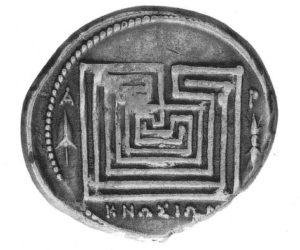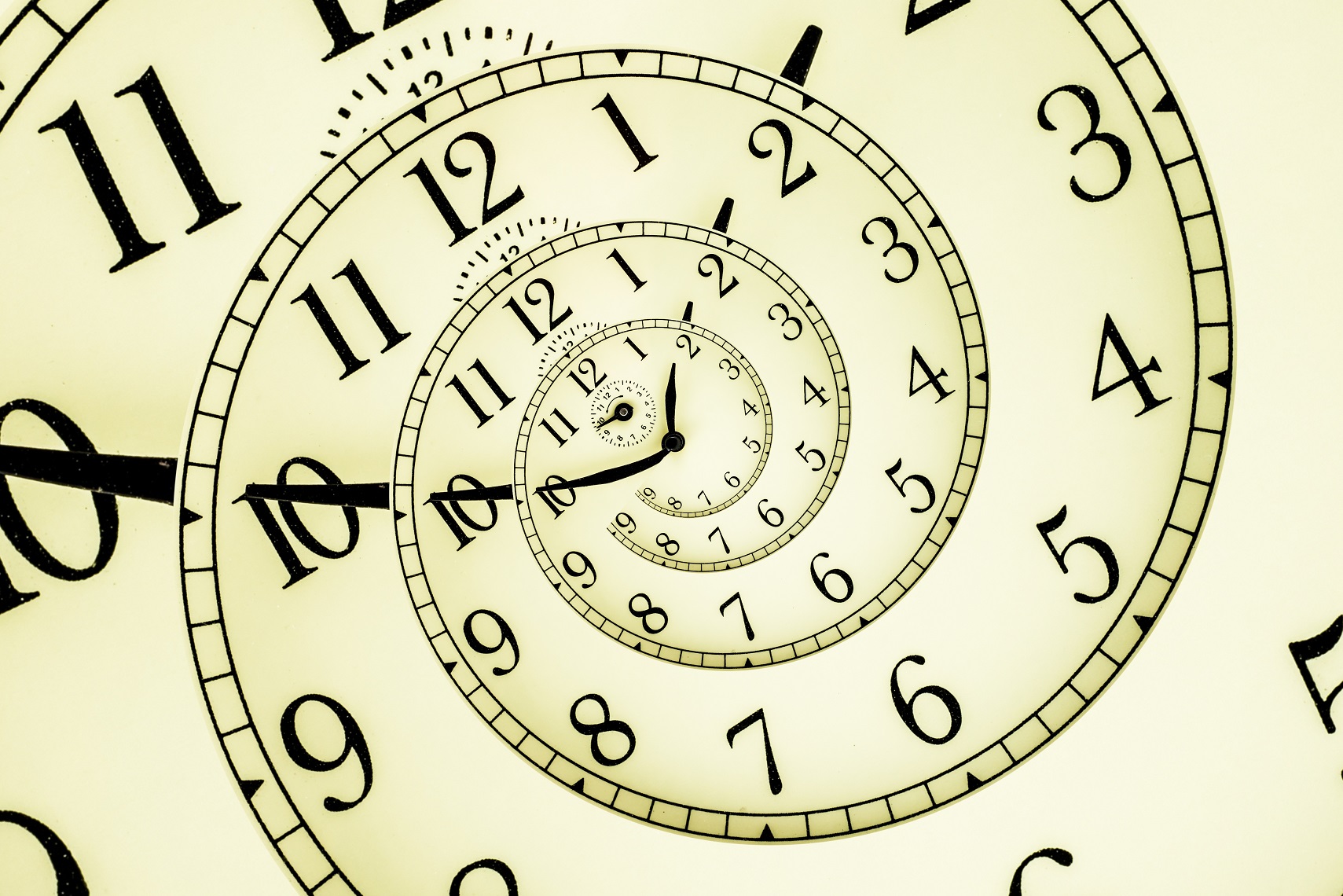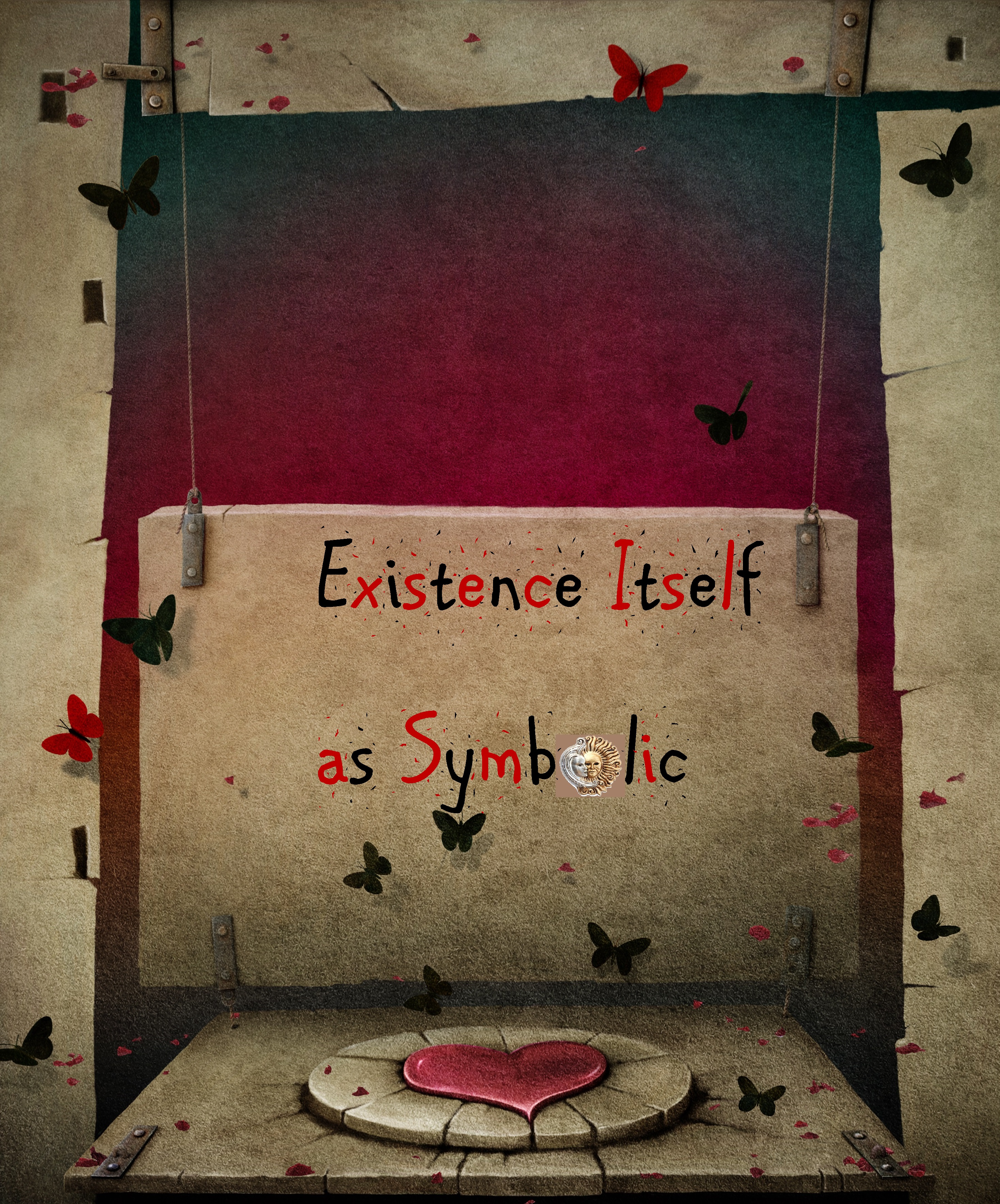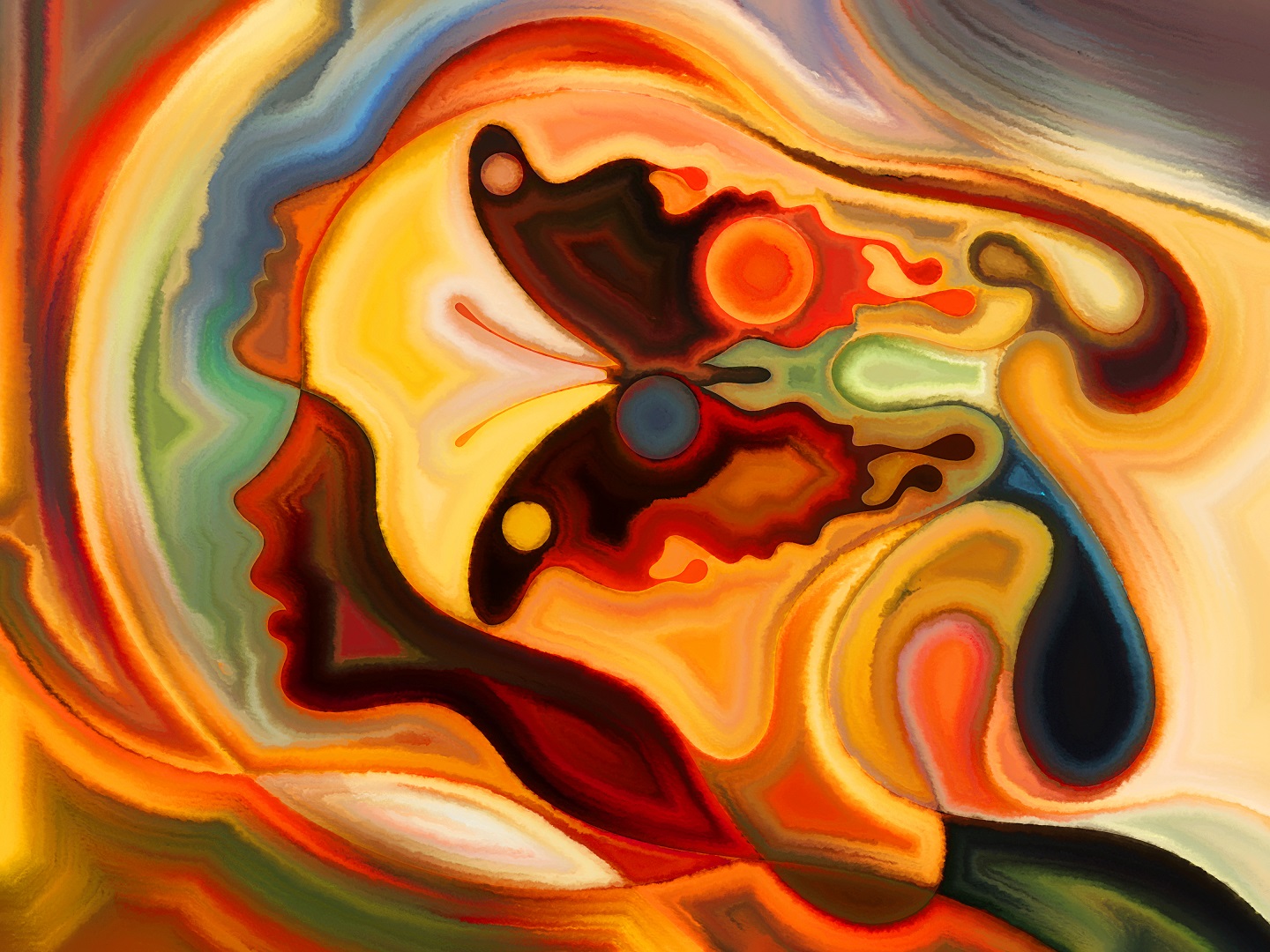
The idea of a labyrinth being built beneath the Cnossian temple-palace to imprison the likes of a theriomorphic creature in the Minotaur would, to the rational majority at least, demonstrate outlandish absurdities that the musings of a hyperactive imagination can at times come up with when it has little else to do. Thus to gain a firm grasp or understanding of where the concept of the labyrinth may have originated or what it might have initially defined, we will have to delve into a whole nexus of meanings implicated by both the etymological route of the word in question and its cross-cultural numinosity.
The story of the labyrinth need not preclude inheritance from the neighbouring civilisation of Egypt given that the archetypal forces of the Taurian Age pursued an avenue of pictorial expression identical in both Crete and Egypt. There is evidence to suggest that a labyrinth was constructed in the area of the Giza Plateau sometime in the nineteenth century bce under the pharaoh Amenemhat III. It proceeded in S-bends and circular pathways, tracing out bodies of water that coursed through the subterranean in an attempt to map out the electromagnetic anomalies generated by the earth’s formative forces. As a whole, the meanders imitated the Duat, the Egyptian Underworld, and initiates into the cult of the bull-god Osiris supposedly induced altered states of consciousness before dancing along the track in an attempt to recreate the drama of the soul’s wandering after death. Perhaps it was vigorous trade that brought the famous tale to Crete via a sea route which linked the southern port of Kato Zakros with Avaris, a bustling Egyptian town in the Nile Delta. Or was it?
Of interest here is that the Egyptian version identifies the meandering forms of the labyrinth to be one and the same with the routes delineated by the ancient dances of the astronomer-priestesses of Cnossos which imitated the movements of the sun, the moon and Venus as they traced intricate geometrical patterns in sidereal space around the earth. This tenet is vindicated by a later reference made by Smyrna-born poet Homer in the Iliad in which he describes an elaborately crafted dance floor at the temple-palace of Cnossos identical to the one that had been made by Daedalus for Ariadne, the daughter of King Minos and Queen Pasiphae. Writing nearly a millennium after Homer, Plutarch explains that upon having reached the Aegean isle of Delos, Theseus and his fellow conspirators performed a celebratory dance to commemorate the slaying of the Minotaur. The dance itself, known as the Kronou Teknophagia or Crane Dance, not only imitates the winding courses which typify the labyrinth symbol but recapitulates in whole an elaborate mating ritual between cranes in which sinuous movements are performed from left to right and then repeated again in reverse order.
Cranes are migratory birds that desert their meticulously built nests in the Aegean as the end of summer approaches and flock across to the African grasslands; there, they spend the entire winter before returning to the same nests at the beginning of spring. For the astronomer-priestesses who always sought to reunify the differing aspects of creation through ritual and perceive its holistic wholeness through divine epiphany, the departure of the cranes at the end of winter would have no doubt constituted a material expression of the soul’s wondering after death, their prolonged absence a corporeal reflection of the unseen transformative process, and their return again in spring evidence of the soul’s eventual rebirth or resurrection. The epiphany itself, incited through frenzied and orgiastic rites, was quintessentially an all-encompassing encounter with the wholly feminine formative powers of the earth and the attainment of knowledge which underpinned the conception and generation upon which all corporeal life is hinged. As a result to have an epiphany was to attract to oneself wholly intuitive knowledge regarding the soul’s transformation after death and its eventual resurrection.
Thus far, Egyptian discourse and classical Greek myth have both disclosed that the connection between the meander, the Underworld and dance patterns would have been made during the Taurian Age, if not earlier. Even the etiological route of the word in question seems to suggest this. The word labyrinthos derives from labrys, a Lydian word which means double-headed axe. In turn, labyrinthos denotes the ‘place or house of the double-headed axe’. Double-headed axes were sacred implements central to the Minoan culture and were used by the astronomer-priestesses in the ritual slaying of the bull. This said we should also remember the first cogitation of the implement was never a corporeal affair; it was entirely celestial. On the star-spangled body of the celestial goddess, a phenomenon clearly visible to anybody pondering the night sky during the Taurian Age, the mouth area in which the double-headed axe was imagined to exist marked the western horizon. It was the place where the sun’s diurnal journey came to an end; the place where it was swallowed by the goddess’s mouth after being hacked to bits by her double-headed axe. The sun’s act of being swallowed into oblivion was a death of sorts, hence the astronomer-priestesses would have vindicated that the zone in question marked a definitive place of transition from living to non-living realms. For people whose collective psyche was celestially orientated to begin with, there can be no question that the ‘place or house of the double axe’ explicitly connoted the celestial gate which led to the Underworld.
The shape of the labyrinth as a material manifestation of the intangible Underworld is certainly in synch with the convictions of our very primitive ancestors, with its dark and obscure passages mimicking the convoluted celestial routes which the soul was supposed to navigate in its endeavour to reach the circumpolar stars of eternity and its blind alleys reflective of anxieties that the uncertainty of death would have no doubt incited. Just like the ancient Minoans and Egyptians, the Palaeolithic and Neolithic culture that thrived on Crete envisioned the abode of the Underworld as a series of water-filled winding passages beneath the surface of the earth. The earliest representations of this symbol, drawn on rocks, gypsum and limestone caves by our tribal ancestors, closely resemble the labyrinth depicted on the spiralling dance floors at the Minoan temple-palaces of Cnossos and Haghia Triada, on a clay tablet unearthed in the Peloponnesian town of Pylos, as well as on ancient coins dating to the classical era (ce. 350bce) that were gathered from the hill of Kephala during the time that Sir Arthur Evans was excavating Cnossos. Therefore it appears that when the first meanders were being drawn onto the walls of caves, our primitive ancestors had already envisioned the living, tangible connection which underran the serpent, underground water, dancing and the Underworld–an association henceforth exemplified in the labyrinth pictogram.
That the images of serpent, Underworld, ritual dance and subterranean water had all been identified as dynamic components of the same labyrinth symbol as long ago as the Palaeolithic and Neolithic Periods is curious, for as we have seen in our investigation of consciousness thus far, our primordial ancestors developed their cosmogony through intuitively felt knowledge. They never attributed otherwise heterogeneous concepts or objects to the same pictograms or ideograms unless there was an intrinsically felt truth to the enterprise. Hence what remains to be answered is how this connection may have been established. What phenomenon may have underpropped the said concepts? The only naturally occurring one which garners an integrated and holistic understanding of the same four concepts that I can think of is the earth’s geodetic force, otherwise known as geodetic lines. In actual fact, it wouldn’t surprise me at all if the Minoan temple-palace of Cnossos was constructed on a geodetic hotspot or at the intersection of such lines (called a node or energy vertex) by astronomer-priestesses who understood their significance and could appropriate the energies which emanated from the paths they traced along the earth.
The general understanding is that geodetic lines, or ley lines as they have been branded by parapsychological investigators and occultists nowadays, hypothetically align groups of consecrated sites in the same geographical region. Alfred Watkins first coined the term in 1921 to describe these ceremonial pathways, though it wasn’t until Guy Underwood identified them as markers for an electromagnetic anomaly that was generated underground that they acquired the occult significance for which they are famed today. In his fascinating book titled The Pattern of the Past, Underwood divulged that the geodetic force originated deep beneath the earth’s surface, and more significantly perhaps, that its wave motions were wholly defined by mathematical laws involving the numbers three and seven. From there, the force powered up to the surface as an innumerable series of magnetic currents like a giant tree experiencing its entire spurt growth within the space of a microsecond. Upon having surfaced, its individual currents or lines proceeded to meander about vertically– an oddity which recalls the spiralling forms of the labyrinth motif–and affected the electromagnetic workings of the mammalian nervous system.
On closer inspection, it became apparent to Underwood that there were two different types of geodetic lines–track lines and aquastats. The less powerful of the two comprised a network of six lines grouped into two triads, whilst the stronger current comprised twelve lines grouped into four triads, with each triad maintaining the distance of a third to two thirds of a metre from one another. Just like the pranic life force, the intangible electricity coursing through the living body is betrayed by the sound of a pulse so too did Underwood believe that the geodetic force was the palpable heartbeat of Nature, herself a giant living organism.
According to Underwood, areas under which geodetic lines pass somehow disrupt a positively charged current in the earth, a phenomenon which is greatly amplified by the presence of subterranean water. If we concur to this logic, then any significantly large body of underground water should be able to magnify existing electromagnetic anomalies to the point that self-contained energy vortices appear. In inverting the energy flow at a particular junction, vortices can in effect wreak havoc with electrical and magnetic currents of the earth and in doing so manifest anti-gravitational quirks such as those we might find at Spook Hill in Lake Wales, Florida, at Davelis Cave in the vicinity of Pendeli Mountain in Greece and at the Mystery Spot in Santa Cruz, California. Here, one can witness cars and balls rolling uphill and streams flowing upwards, experience optical illusions whereby peoples’ heights vacillate as they walk about, or acquire paraphysical abilities like walking on a forty-five degree angle, a bizarre feat otherwise only possible in the world of dreams.
Given that the mammalian nervous system is particularly sensitive to these geodetic forces and that the latter interferes with the former, then who goes to say that a conscious appropriation of these earth forces by the human mind wasn’t the driving force behind the herculean feats we see on Easter Island with the erection of the Maoi statues and in England with Stonehenge? Perhaps our primitive ancestors knew how to canalise these geodetic energies to facilitate the construction of megalithic monuments and experience divine epiphany. Both the talent itself and its memory vanished from our memetic library as we climbed along the evolutionary ladder for the same reasons that all other cognitive-based abilities of earth-based consciousness did–it was not essential to survival.
Nowadays, the “New Age” section of many bookshops and libraries is abreast with evidence both anecdotal and experiential in nature attempting to link the electromagnetic anomalies that occur around geodetic lines with phantom armies, ghosts, poltergeists, ghouls and a plethora of other parapsychological phenomena. The theory has fostered a long list of adamant supporters over the years, some of which include eccentric classicist John Mitchell, known amongst esoteric circles for his 1967 publication The Flying Saucer Vision, and British amateur archaeologist Thomas Lethbridge, a scholar whose work with the pendulum contributed to a twentieth century revivification of the idea that all created matter has a vibrational rate. Another researcher by the name of Phil Grant has gone so far as to claim that about nine out of ten UFO sightings and supernatural experiences reported at Bournemouth in the United Kingdom occurred near or on geodetic lines. If convictions of such a provocative nature serve as accurate measures of reality, then any region characterised by a combination of electromagnetic anomalies and supernatural occurrences should in effect mark a geodetic node or hotspot on the earth’s surface. One in Greece proper is Pendeli Mountain, and the priests and priestesses of the Athena goddess no doubt knew of the location’s said significance otherwise there would have been no reason to declare it sacrosanct or to quarry marble to build the Parthenon from its heart-centre when the same marble pervaded regions much closer to their chosen construction sites (i.e. the Acropolis).
While the validity of geodetic energies as the driving and unifying force behind parapsychological episodes and anti-gravitational phenomena of a more radical nature might remain scientifically unverifiable and questionable for some time yet, the numinous character of the labyrinth motif and its nexus of meanings does much to vindicate the existence of a primeval cosmology which regarded the bones of the earth in Mother Nature as the seat of universal consciousness and life. From this perspective, the inexplicable phenomena unraveling at the Pendeli region in Greece proper, at Spook Hill in Florida and at the Mystery Spot in California form the tips of a far greater but untold story; they are ancient portals beckoning us to walk through and reacquaint ourselves with the long-forgotten religion and philosophy of our primordial ancestors.









